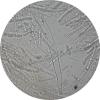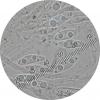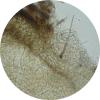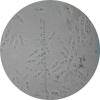
27-11-2025 15:41
Thomas LæssøeSpores brownish, typically 4-celled; 26.8 x 2.4;

27-11-2025 12:01
Thomas Læssøehttps://svampe.databasen.org/observations/10496727

27-11-2025 11:46
Thomas Læssøehttps://svampe.databasen.org/observations/10493918

27-11-2025 11:31
Thomas LæssøeCollectors notes: Immersed ascomata, erumpent thro

23-09-2025 13:31
Thomas Læssøehttps://svampe.databasen.org/observations/10534623

25-11-2025 14:24
Thomas Læssøehttps://svampe.databasen.org/observations/10490522

26-11-2025 18:13
The entire run of Mycotaxon is now available throu

25-11-2025 11:03
Mick PeerdemanHi all,One of my earliest microscopy attempts, so
Asco inconue
Piet BORMANS,
28-06-2008 14:31
 Bonjour à tous,
Bonjour à tous,Je sollicite votre aide pour la détermination d'un ascomycète que j'ai trouvé sur bois mort, très humide.
Voici mes données:
Apothécies de 0,5 - 2 mm maximum.
Micro:
Spores: 15-18 x 4-5 µm
Asques: 100-125 x 10-12 µm
Les paraphyses sont pluri-guttulées
J'ajoute 4 photos:
- Apothécies, asques, paraphyses et spores
Merci d'avance de votre aide.
Piet Bormans
Hans-Otto Baral,
28-06-2008 17:51

Re:Asco inconue
Hi Piet
This is "Pachydisca" fulvidula or perhaps a closely related species. It is a quite difficult group. Usually the spores are longer, 18-21 or up to 26.5 µm. The asci are without croziers and I suppose that is also visible in your last image. Could you please test the Lugol reaction and make a photo of it? It would also be interesting to see the excipulum in median section (at about 400x). This should look a bit like in Mollisia.
From where comes this find? The species is typical of acis bogs.
Zotto
This is "Pachydisca" fulvidula or perhaps a closely related species. It is a quite difficult group. Usually the spores are longer, 18-21 or up to 26.5 µm. The asci are without croziers and I suppose that is also visible in your last image. Could you please test the Lugol reaction and make a photo of it? It would also be interesting to see the excipulum in median section (at about 400x). This should look a bit like in Mollisia.
From where comes this find? The species is typical of acis bogs.
Zotto
Piet BORMANS,
29-06-2008 15:53
Hans-Otto Baral,
29-06-2008 18:37

Re:Asco inconue
Dear Piet
The IKI reaction of the ascus apex is a bit indistinct (should be more clearly blue). Otherwise all fits well to fulvidula, in my opinion. I have images of apos with yellow hymenium as well as greyish, and exterior from white to blackish-brown near the base. The species is related to Hymenoscyphus epiphyllus and should belong in that genus, or in Phaeohelotium if that is considered separable.
Zotto
The IKI reaction of the ascus apex is a bit indistinct (should be more clearly blue). Otherwise all fits well to fulvidula, in my opinion. I have images of apos with yellow hymenium as well as greyish, and exterior from white to blackish-brown near the base. The species is related to Hymenoscyphus epiphyllus and should belong in that genus, or in Phaeohelotium if that is considered separable.
Zotto
Piet BORMANS,
29-06-2008 21:27

Re:Asco inconue
Thank you very much Zotto








